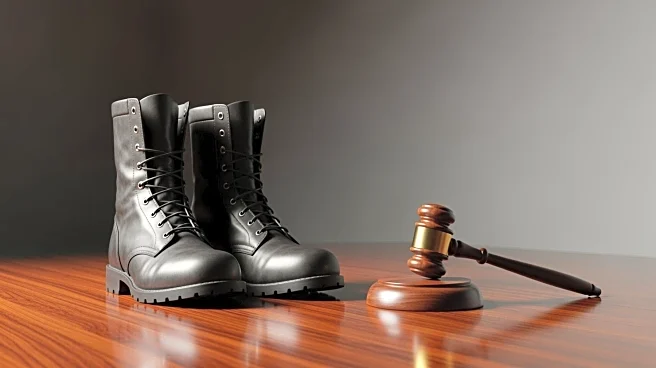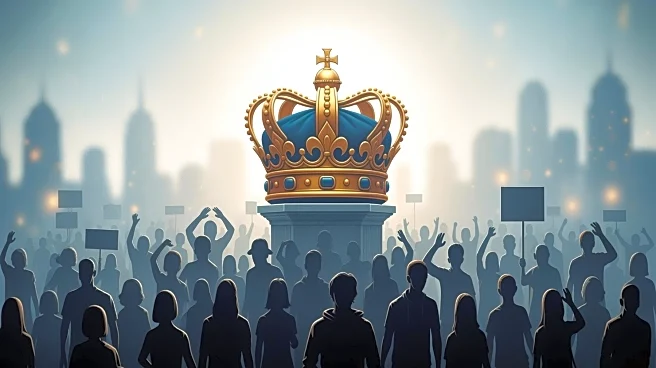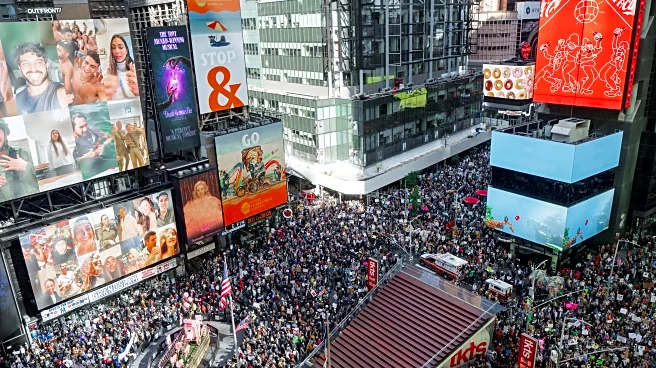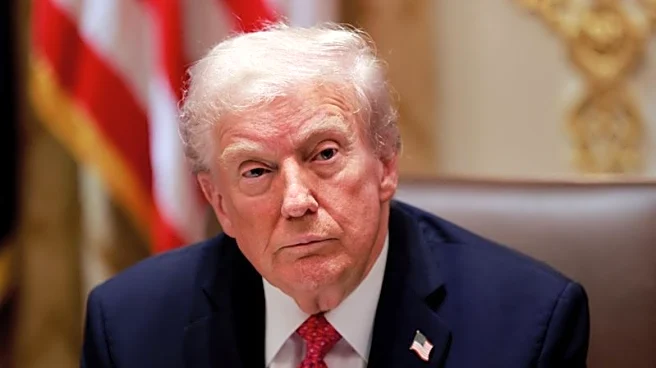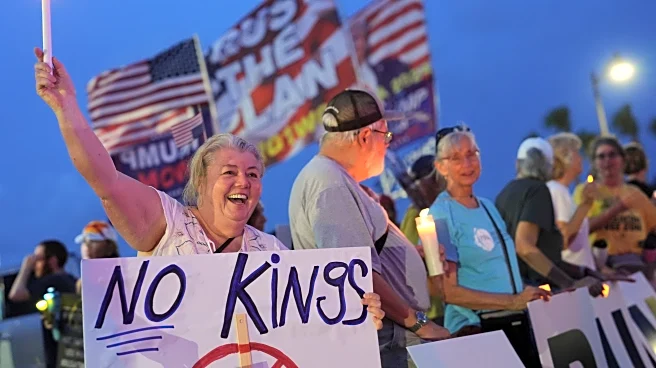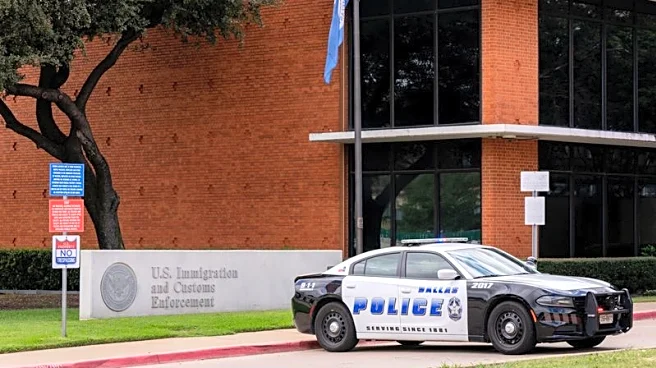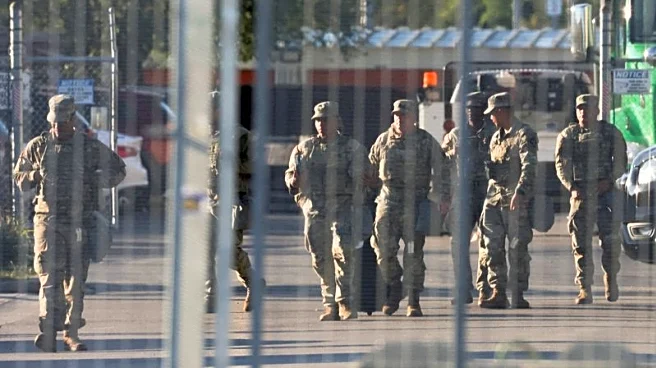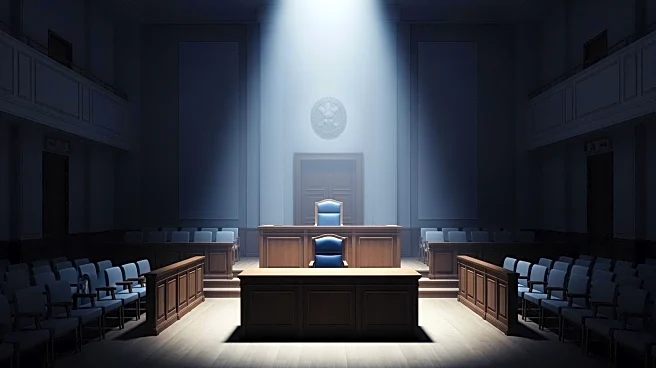What's Happening?
In a unique form of protest, demonstrators across the United States have adopted inflatable costumes to express their opposition to President Trump's administration. The 'No Kings' protests, which took
place on October 18, saw participants donning costumes ranging from frogs and chickens to T-Rex dinosaurs. This whimsical approach aims to counter the Trump administration's portrayal of cities like Portland and Chicago as lawless and dangerous. The costumes serve as a visual rebuke to these claims, with activists using humor and absurdity to make their point. The trend began in Portland, Oregon, where local activists used inflatable costumes in protests against Immigration and Customs Enforcement (ICE) facilities. The movement, dubbed 'Operation Inflation,' has gained traction, with thousands of donations supporting the distribution of costumes for protests.
Why It's Important?
The use of inflatable costumes in protests against President Trump highlights a strategic shift in how demonstrators are engaging with political narratives. By adopting a humorous and non-threatening approach, protesters aim to undermine the administration's depiction of them as violent or radical. This tactic not only garners media attention but also broadens the appeal of the protests, potentially attracting a wider audience. The costumes serve as a counter-narrative to the administration's rhetoric, challenging the justification for increased federal intervention in cities. This approach could influence public perception and political discourse, emphasizing peaceful and creative forms of protest over confrontational methods.
What's Next?
As the protests continue, it is likely that the use of inflatable costumes will persist as a symbol of resistance against the Trump administration. The movement may inspire similar creative protest methods in other political contexts, potentially influencing how future demonstrations are conducted. Political leaders and strategists will be watching closely to see if this approach effectively shifts public opinion or impacts policy decisions. The administration's response to these protests, particularly in terms of rhetoric and policy, will also be a key factor in determining the movement's future direction.
Beyond the Headlines
The adoption of inflatable costumes in protests raises questions about the role of humor and absurdity in political activism. This approach challenges traditional notions of protest, which often emphasize seriousness and confrontation. By incorporating elements of performance and spectacle, the movement blurs the lines between activism and entertainment, potentially redefining how political messages are communicated. This strategy also highlights the power of visual imagery in shaping public perception and discourse, suggesting that creative and unconventional methods can be effective tools in political advocacy.


